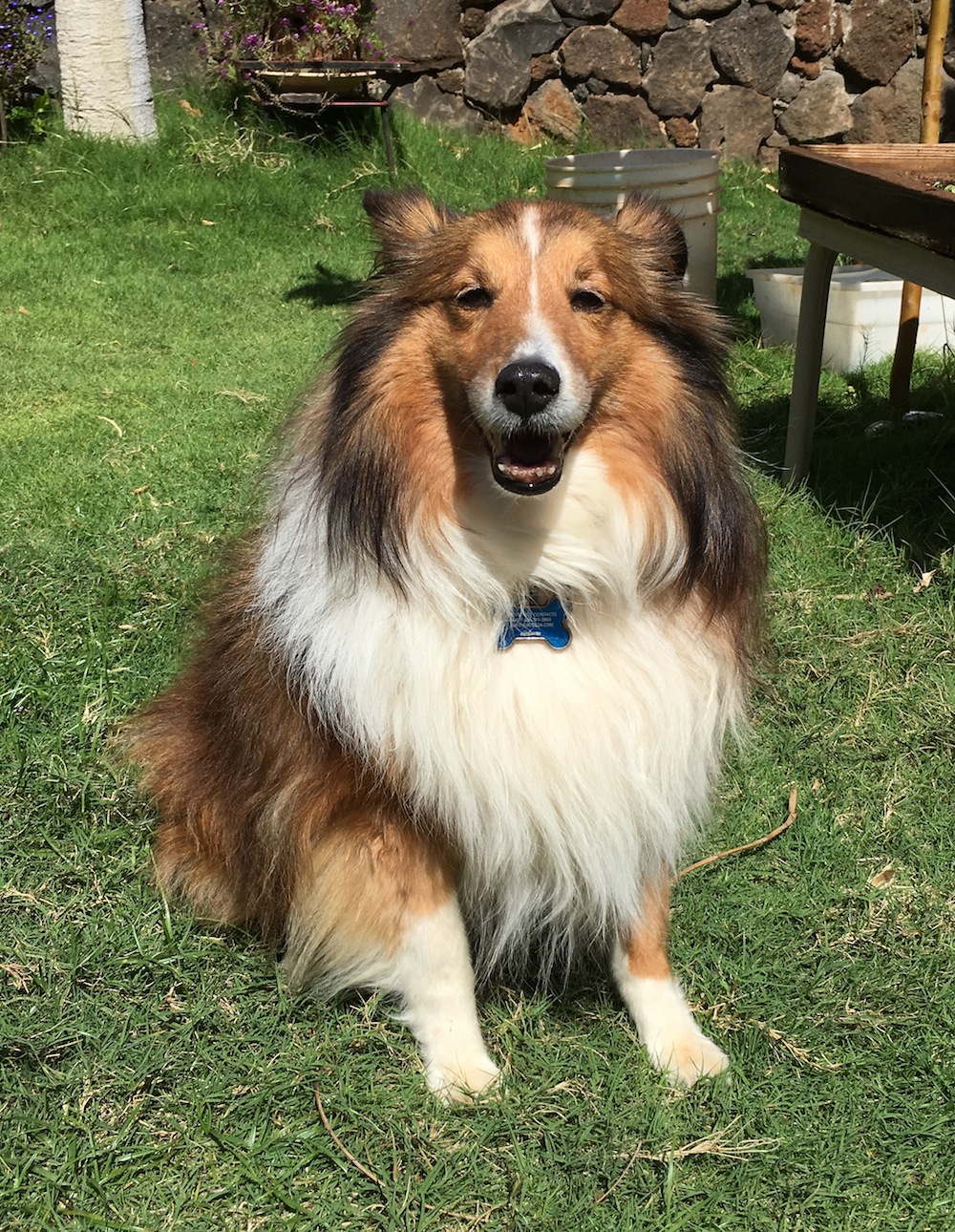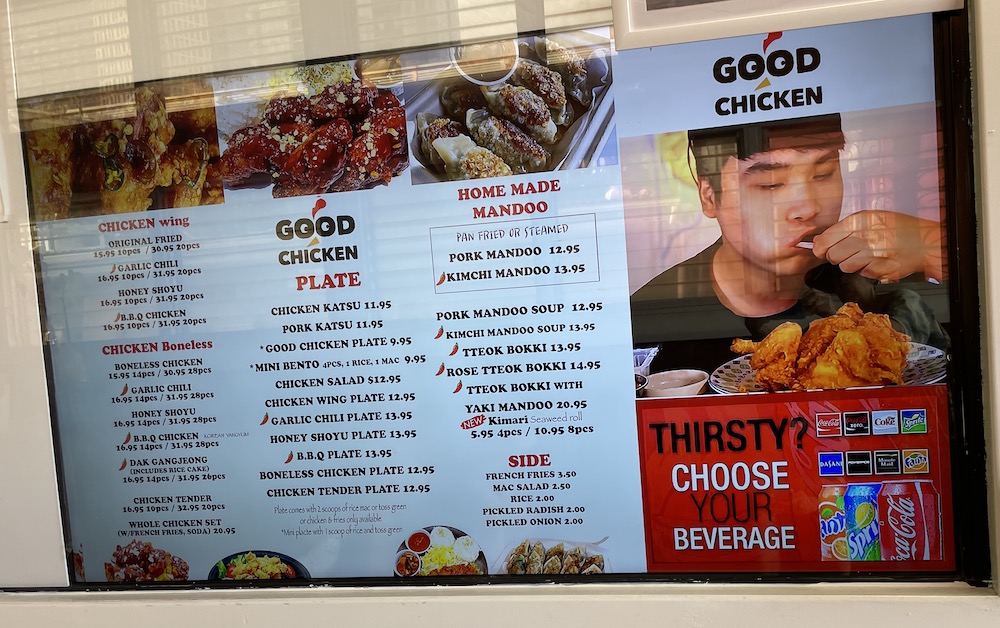
The name of this take out restaurant is understated. It should be DANG Good Chicken, because it really is dang good.
I went there 3 times this week. That’s how ono it was.
The first time I ordered kimchee mandoo only ($13.95) because I had already ordered oxtail soup and chopped steak from Asahi Grill on Ward Avenue. Asahi Grill told me 20 minutes so I took a stroll down Kawaiahao Street and saw the chicken shop (which used to be a Vietnamese restaurant before). It is between Asahi Grill and the Rice Factory on Kawaiahao Street. Limited parking in the front with more parking available in the back.
The kimchee mandoo was dang good! A tad too spicy but super ono since it was made fresh and fried the way I like it. And they were stuffed big and juicy with a vinegary onion & radish sauce on the side.
The next time I went I ordered the Whole Chicken Set ($20.95) which was a deep fried split chicken with french fries and a drink. It is what that kid on the video display was eating with delightful crunchy abandon. Super crispy skin and moist and hot inside. SO good! I also ordered the regular Pork Mandoo fried ($12.95) and loved it. At Jay’s (the owner) suggestion, I added the Pork Mandoo Soup ($12.95) and thought it was very comforting but a bit mild. If I do order soup again, it will be the Kim Chee Mandoo Soup. Here are pictures – which I took after I started chowing down because I just couldn’t wait.
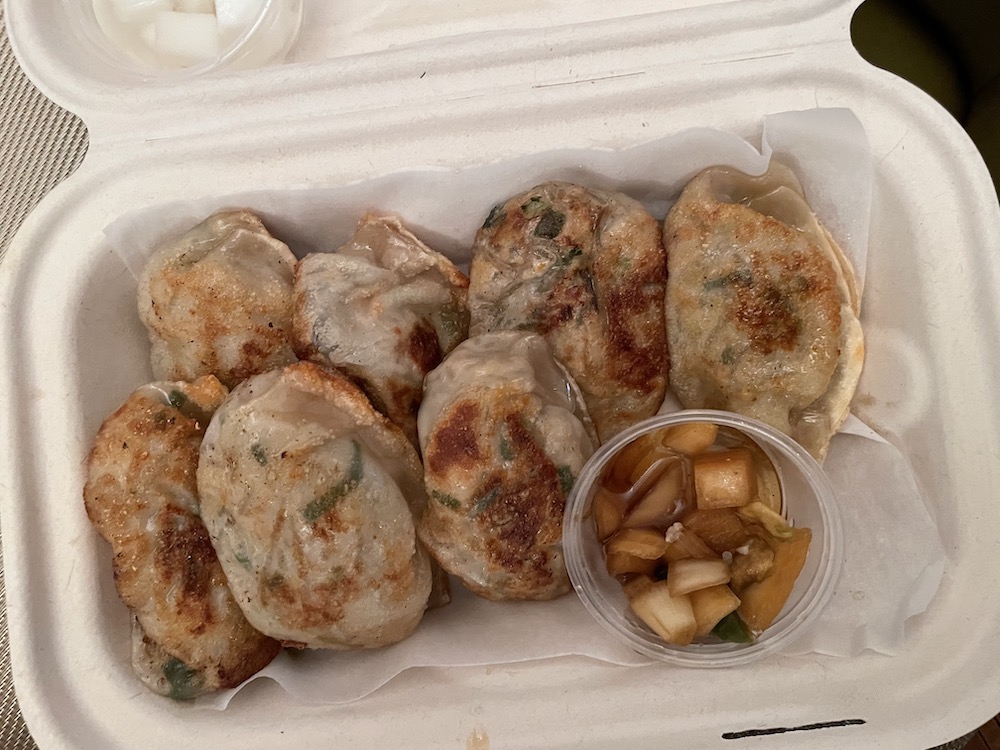
fried mandoo with one piece missing 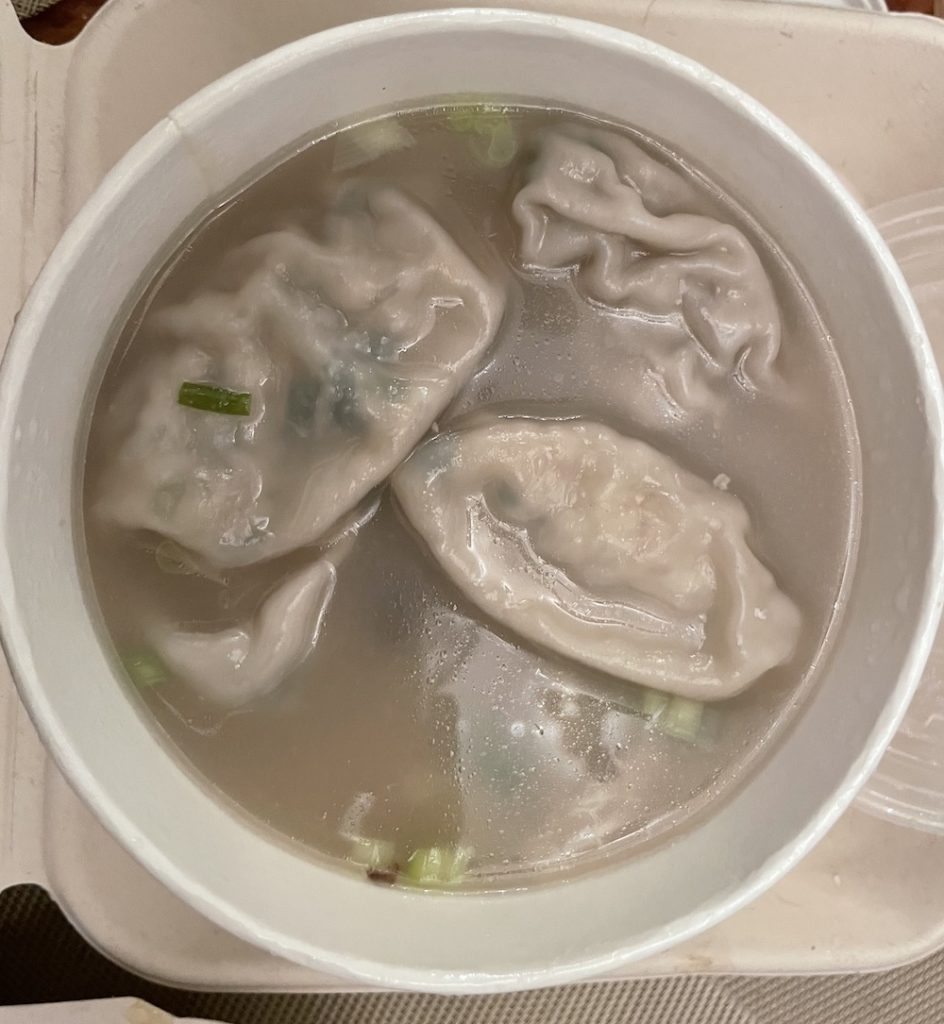
pork mandoo soup 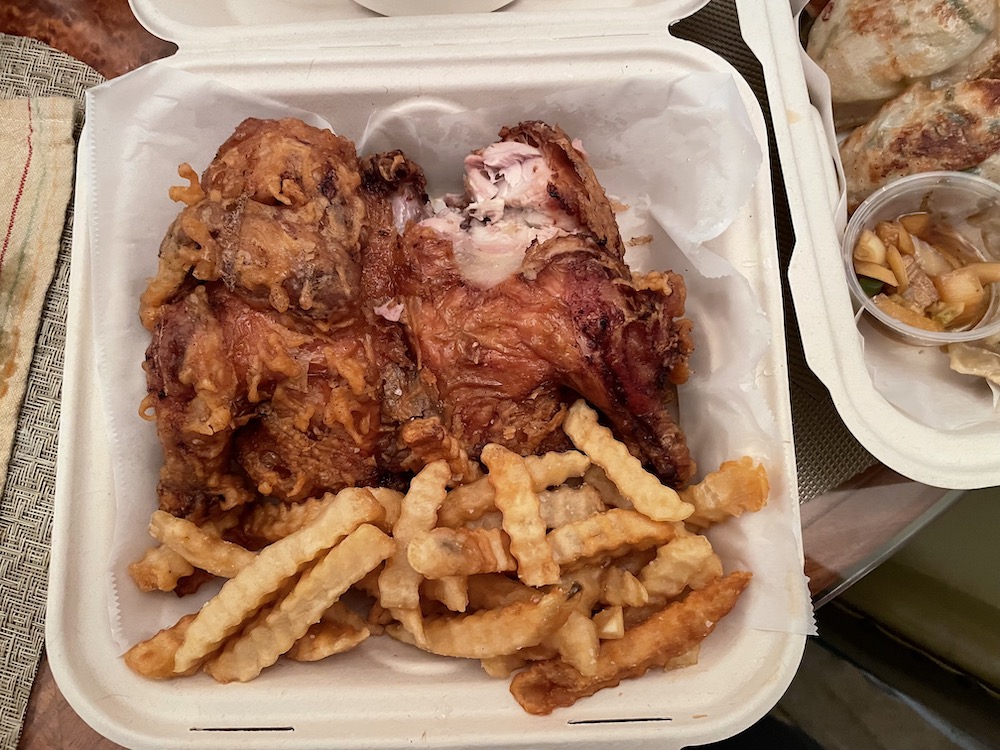
whole chicken set with wing missing
Then, yesterday, Pal Wandaful and I stopped in before we went to the Hawaii Collector’s Expo at the Blaisdell (was a REALLY good show this year!) and we split an order of the fantastic fried Pork Mandoo ($12.95) and a Garlic Chili Chicken Wing plate ($12.95) which was just right spicy, steaming hot out of the kitchen and finger licking good!
Just thinking about it makes me want to order the Garlic Chili Chicken Wings ($16.95 for 10 pieces) or maybe try the Dak Gangjeong with rice cake ($16.95). Or maybe Tteok Bokki (mochi logs) with Yaki Mandoo ($20.95) or their new Kimari seaweed rolls ($5.95). There is a way to order using this QR code but that is too techie for me. I rather just go down, order, and wait. It is really fun to watch that kid in the video eat and eat and eat. EVERYTHING is good there. Dang good!

Update: I went back today because I was out and about (senior discount day at Ross and Savers) and just had to order the 10 pieces of garlic chili chicken wings ($16.95), another whole chicken set ($20.95), half order of Dak Gangjeong ($16.95), more pork mandoo, and the Tteokbokki Rice Cake with Kimari ($13.95 + $10.95). Yes, I was hungry and my forever hungry daughter was coming for dinner and she LOVED the crispy fried chicken and kimari (deep fried seaweed roll).
The Dak Gangjeong was a bit too hot for me – it had a good taste like Chinese style sweet and sour but more heat and rice cake rolls added in for interesting texture. The Kimari had to be ordered with Tteokbokki because it is dipped in and eaten with the radish pickles. Another interesting one. The half order of garlic chili chicken wings was more chicken than a plate lunch and so satisfying, as was the always wonderful pork mandoo. I had cooked a pot of rice and we really did feast tonight – and there was a LOT of leftovers.
I wonder if I’ll ever get tired of their food. I have a feeling this is going to be one of my regular stops. But not tomorrow, I think.
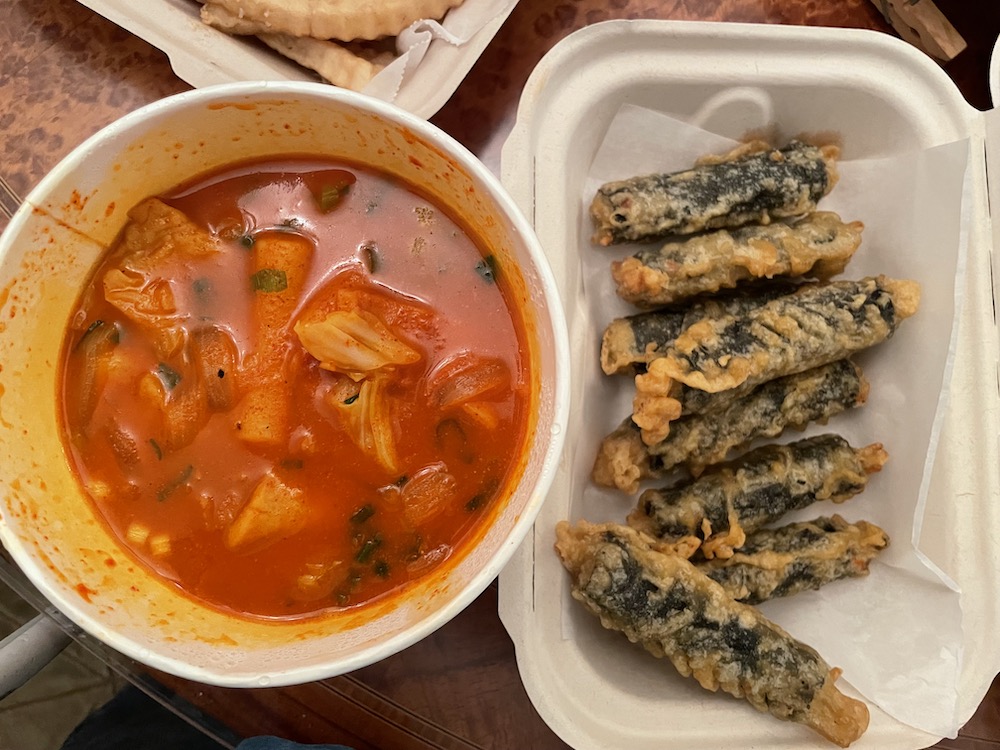
Tteokbokki rice cake with Kimari rolls 
Dak Gangjeong 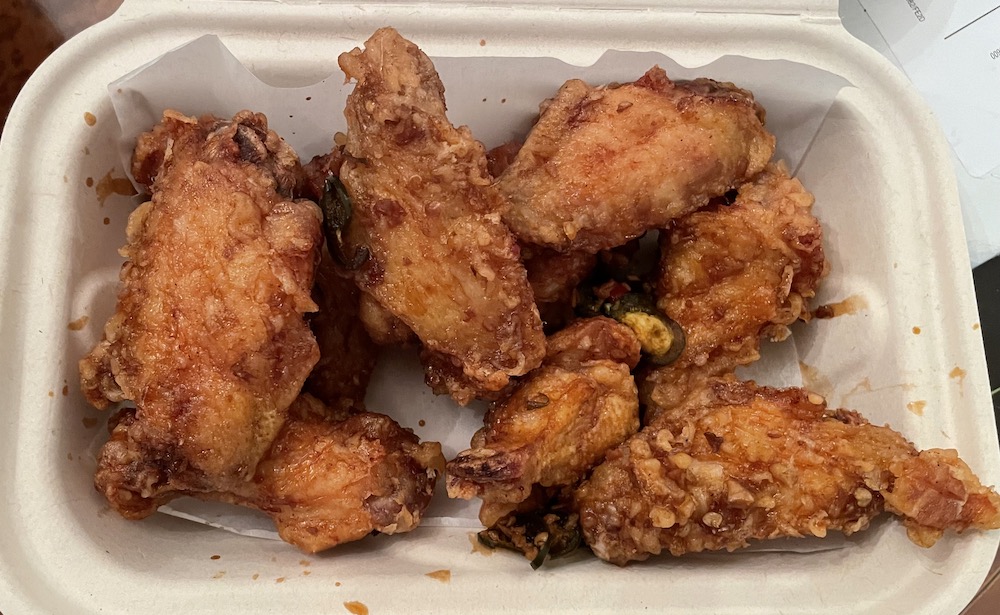
Partially eaten Garlic Chili wings

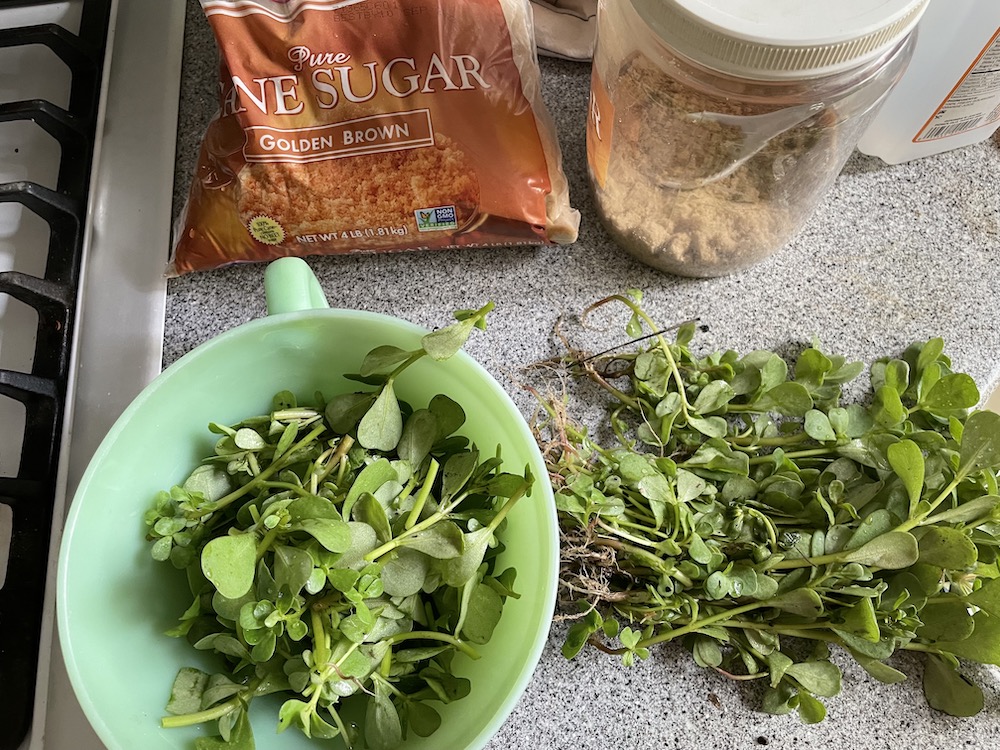
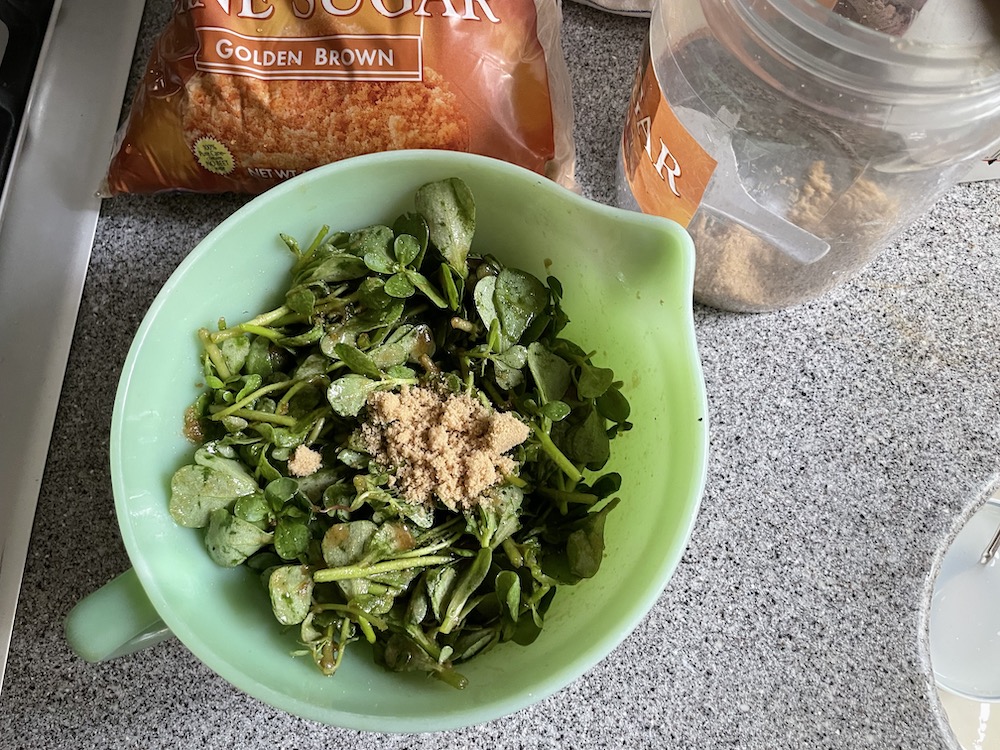
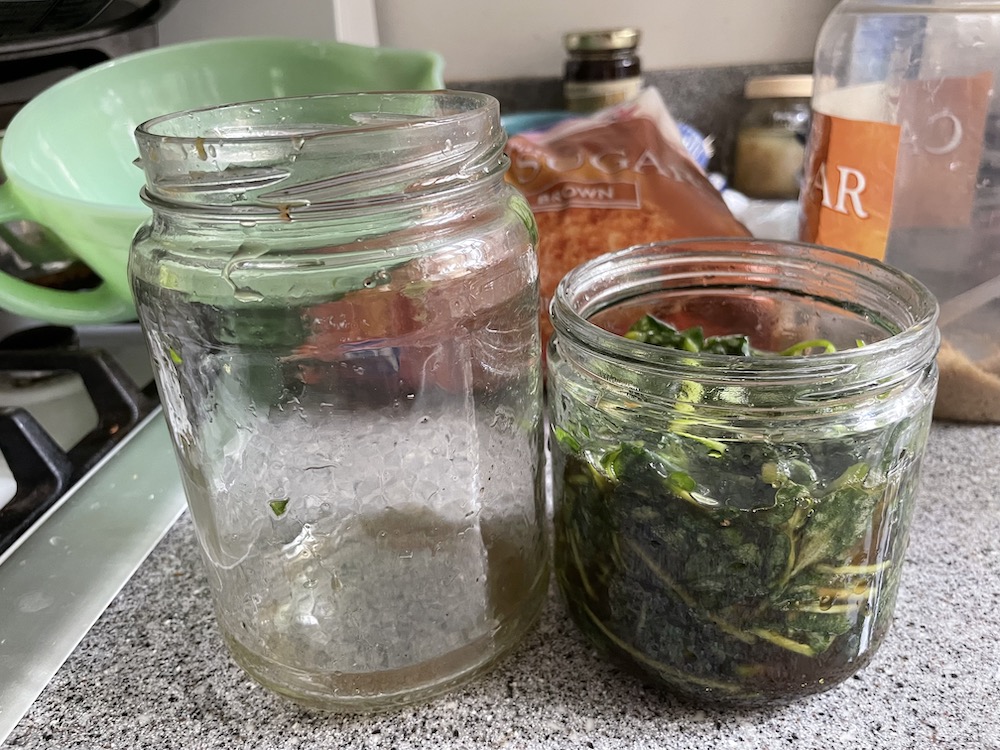

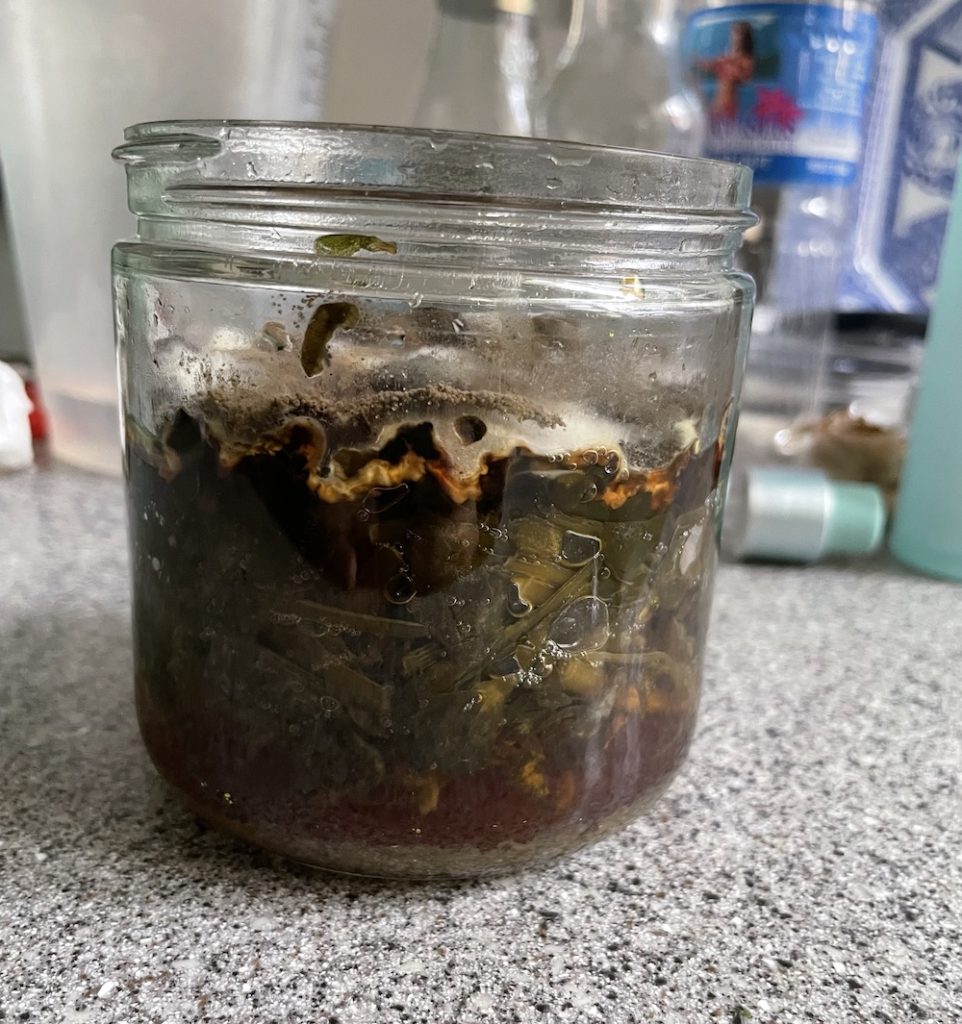
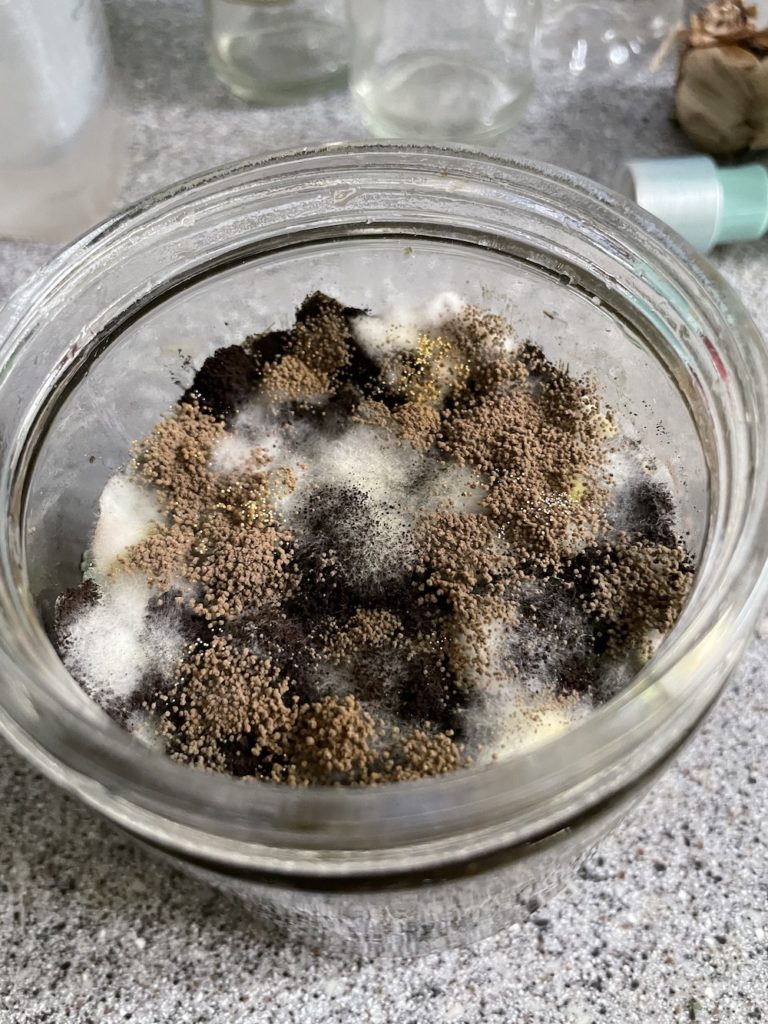
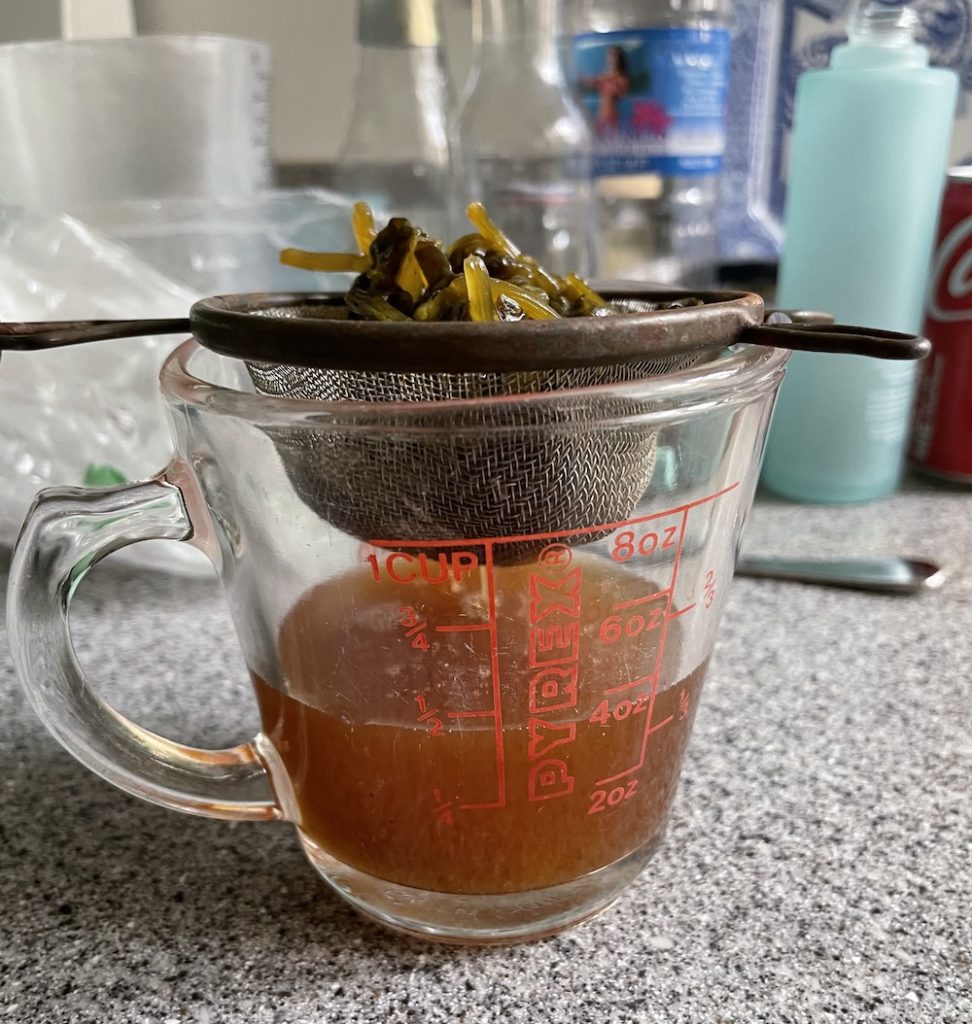
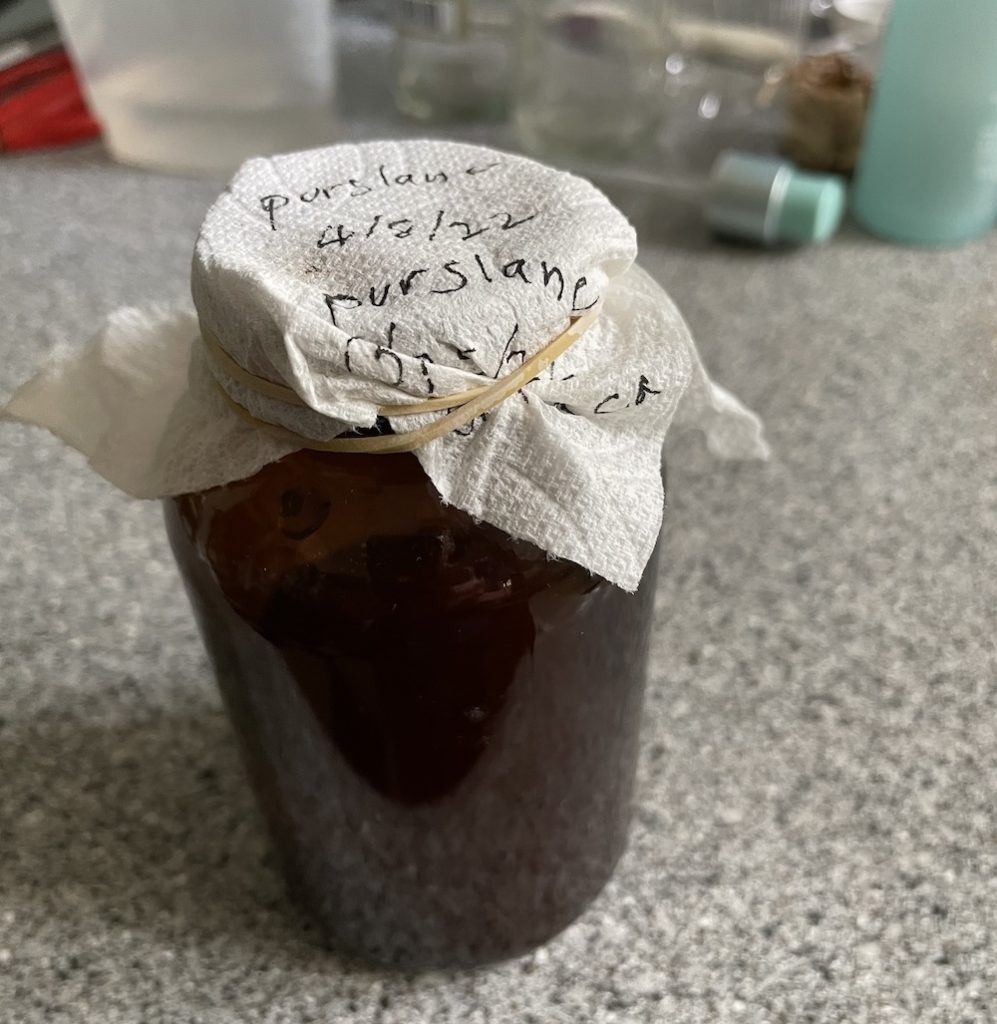
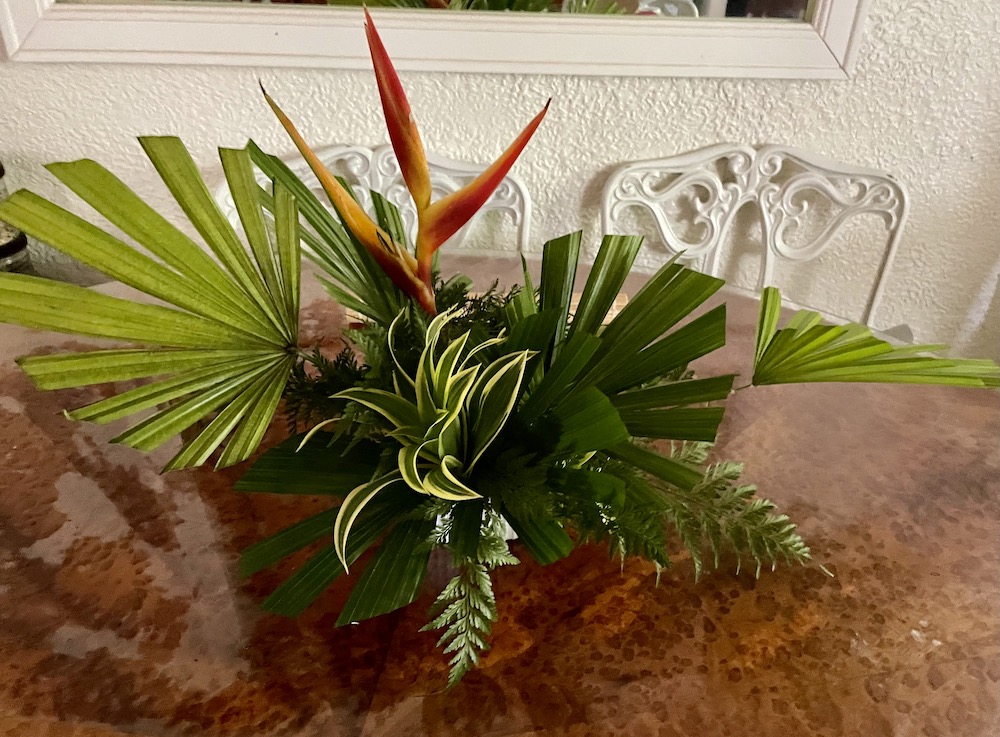
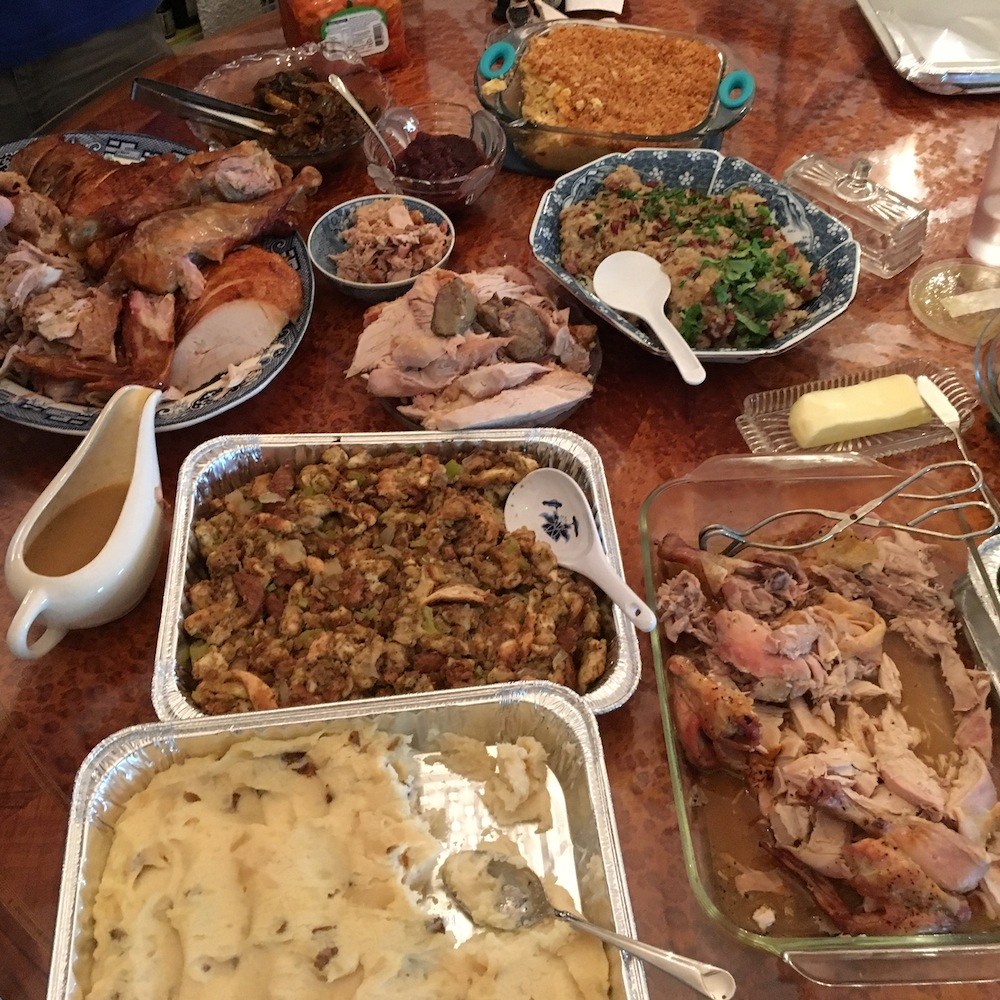 Every Thanksgiving, Aunty makes this mochi rice stuffing for friends and family. The very first year, we used it to stuff the turkey that Uncle and Cousin Mike were in charge of – using a large hibachi grill with dome cover. Because the turkey was stuffed, it took way longer to cook and the 2 “boys” came in sunburned, quite drunk with too many beers, and the stuffing oozing out and charred.
Every Thanksgiving, Aunty makes this mochi rice stuffing for friends and family. The very first year, we used it to stuff the turkey that Uncle and Cousin Mike were in charge of – using a large hibachi grill with dome cover. Because the turkey was stuffed, it took way longer to cook and the 2 “boys” came in sunburned, quite drunk with too many beers, and the stuffing oozing out and charred.